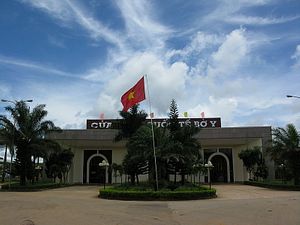Late last month, Vietnam and Laos held another iteration of a border management meeting between them. Though the interaction was part of a regular series of meetings both neighboring Southeast Asian countries hold on this front, it nonetheless illustrated the importance of border issues within the broader bilateral relationship.
As I have noted previously in these pages, border management has been long been a key issue in the Vietnam-Laos defense relationship, being both a source of opportunity (in terms of border trade) and challenge (in terms of managing issues such as drug trafficking or migration) for both Southeast Asian states. Delegations between the two sides meet frequently at various levels to talk about border issues.
Late last month, this aspect of the defense relationship was in the headlines with the convening of the 15th annual meeting on the management and protection of shared border areas. The meeting took place on October 25 between the border guard commands of three Vietnamese provinces – Thua Thien, Quang Nam, and Kon Tum – and Sekong province in Laos.
As is the case with such interactions, during the meeting, the two sides reviewed the state of current border cooperation between them over the past year as well as discussed other issues of common interest and future opportunities for collaboration in this area and beyond.
According to the official account of the meeting by Vietnam’s defense ministry, with respect to ongoing cooperation, the two sides expressed satisfaction with the stable security situation on the border and concluded that requirements had been met following a series of interactions, including 40 joint patrols with the participation of 672 troops and activities including public awareness campaigns, student exchanges, and the provision of aid and food to people in border areas.
And with respect to future collaboration, both sides agreed to continue to enhance coordination between them, with a focus on areas such as information sharing and delegation exchanges. They also reached consensus on future projects to be conducted in 2020 and beyond as well.
To be sure, this is just one among a series of ongoing meetings between the two sides on border management. And, as usual, few specifics were publicly disclosed about the private deliberations both sides had, including the challenges they continue to confront. Nonetheless, these interactions will continue to be important to monitor to get a sense for how both sides are making inroads on the issue in the coming months and years.

































